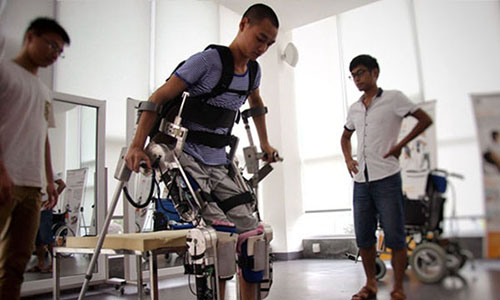SCI-TECH / OTHERS
China develops wearable exoskeleton that mimics human knee

A wearable robotic leg developed by a team from the University of Electronic Science and Technology of China (UESTC) is purportedly one of the first devices of its kind to mimic natural knee movement. Photo: People.cn
A wearable robotic leg developed by a team from the University of Electronic Science and Technology of China (UESTC) is purportedly one of the first devices of its kind to mimic natural knee movement.
The 1-meter-tall robotic leg weighs 19 kilograms. From top to bottom, it features more than 10 joints and dozens of sensors that help patients to walk normally.
This exoskeleton is more advanced and simulates the behavior of a natural knee joint more closely than previous models, according to an employee at the robot development center. Several companies have shown interest in investing in the invention, noted Hong Cheng, the chief executive of the center.
Starting from scratch in 2010, the UESTC team spent only five years developing the robot. That time frame is especially notable when compared to those of overseas scientists working toward the same goal, Hong pointed out. He added that many Chinese universities have now established wearable exoskeleton development centers, driving forward achievements in that area.
Medical robots have conducted 600,000 operations in 800 hospitals around the world. They can also be used in athletic and military projects, Hong said.
